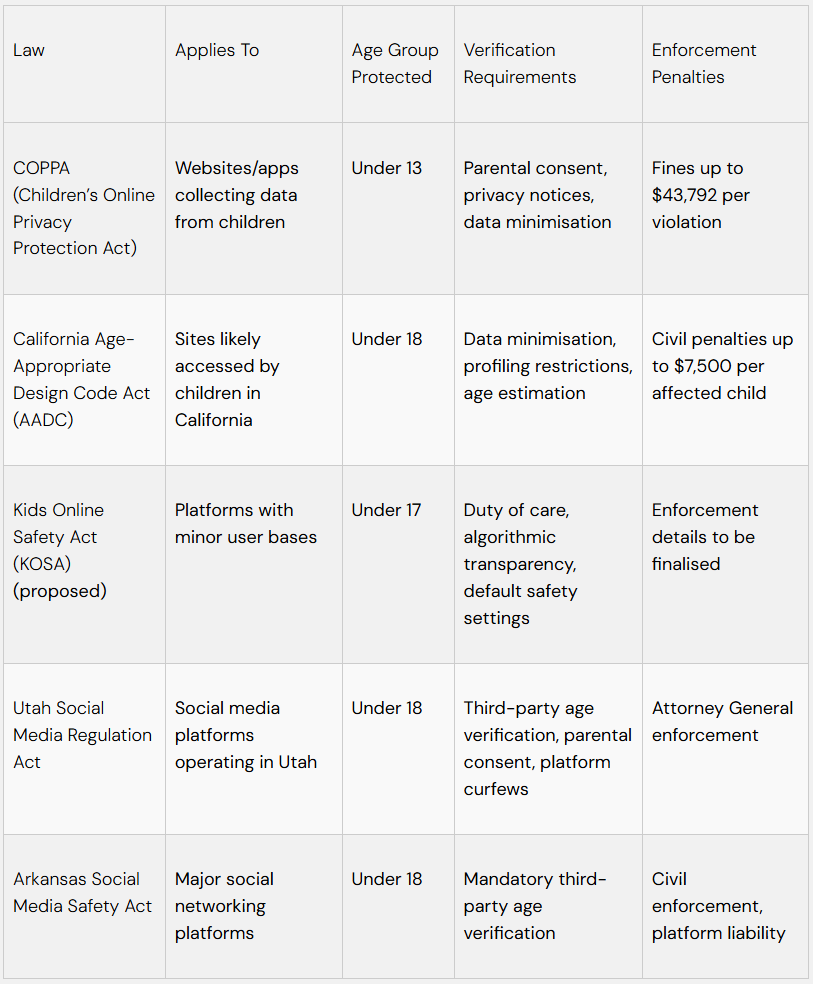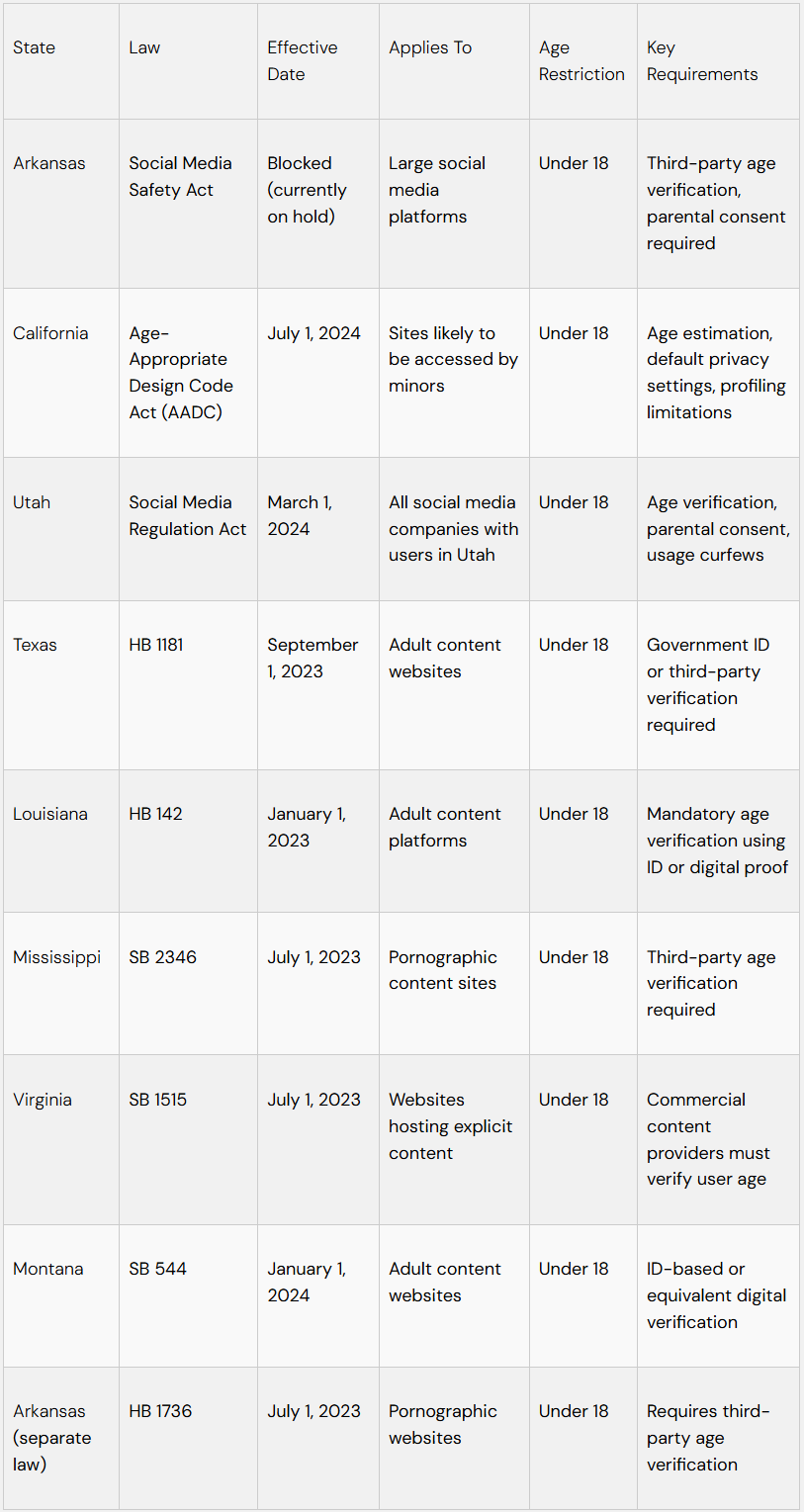
Online platforms are facing mounting pressure to ensure their users are the appropriate age for the services being offered. Age verification, once a mere checkbox or easily bypassed declaration, is now a legal and reputational necessity for businesses operating in the United States.
From social networks and video-sharing platforms to gaming apps and content subscription services, any business catering to or accessible by under-18s is now under scrutiny. Several states have passed or proposed legislation demanding stricter controls to protect minors online. Federal agencies have also stepped up enforcement.
For platforms seeking to remain compliant while balancing privacy and usability, mobile identity and number intelligence plays a prominent role within a business’s age verification toolkit.
The shift towards stricter age verification stems from increasing concern around online safety for children and teens. A few companies have been criticised publicly for minimal user verification, following a number of teen deaths. Legislators have cited rising reports of exploitation, addictive platform design, and inappropriate content exposure as urgent issues requiring intervention.
The United States currently lacks a single federal framework governing age verification across all digital platforms. However, both federal and state-level initiatives are reshaping the compliance landscape. International frameworks, such as the UK’s Age Appropriate Design Code and the EU’s Digital Services Act, have also influenced the direction of US legislation.
In practice, any platform with a significant US user base must now consider how they verify user ages, especially if there is a reasonable likelihood that under-18s will access their services.
While there is no universal federal law enforcing age verification for all online services, several critical regulations have already been passed or proposed. The table below outlines the most impactful legislation digital platforms should understand.

Note: Several of these laws are currently subject to legal challenges or further legislative clarification. Correct as of April 2025.
Whether you operate a niche gaming app, a global messaging platform, or a content-sharing site, these laws represent a fundamental shift. The legal test is no longer whether you intend to serve children, but whether your platform is likely to be accessed by them.
This has far-reaching consequences. Platforms must now conduct internal risk assessments, monitor age-based usage patterns, and deploy effective verification mechanisms. Age gating, once seen as a compliance tick-box, must now be provable, auditable, and tamper-resistant.
In short, businesses are being asked to rethink their entire onboarding and user experience journey, particularly for new and anonymous users.
The table below outlines the states currently leading the way in age verification laws and what their legislation entails.

Note: Several of these laws have faced legal challenges and may be delayed or modified. However, they reflect a nationwide trend towards state-enforced online age verification.
Age verification methods are evolving quickly and not all approaches are considered legally robust. The following are among the most commonly used today:
Each method carries trade-offs in terms of accuracy, user experience, and privacy. Platforms must assess what is proportionate to the level of risk and user demographic. In many cases, combining verification methods (such as mobile network age assurance plus facial estimation) delivers greater assurance and regulatory defensibility.
We provide mobile network-based age assurance that supports platforms in meeting growing regulatory requirements for age verification in the United States.
Through our Verify product, we enable platforms to determine whether a user’s mobile number is:
These checks go beyond basic formatting and validation, offering a scalable and privacy-conscious way to assess the likely age of users as part of a broader compliance framework.
Our tools can also help:
Whether used standalone or as part of a layered verification process, age assurance is a low-friction way to enhance user safety and compliance without adding unnecessary barriers to the user experience.
For platforms balancing legal obligations with seamless onboarding, our solutions offer both flexibility and defensibility.
Platforms operating in the US – or serving US users – can no longer afford to treat age verification as an afterthought. With state-specific legislation gaining ground and federal regulations looming, now is the time to proactively evaluate your compliance strategy.
To recap:
Don’t wait for enforcement to catch up – get ahead of regulation.
Speak to TMT ID today about how our mobile number validation and intelligence tools can support your platform’s age verification needs. Whether you require fraud prevention, user verification, or number intelligence, we help you stay compliant while delivering a seamless user experience.
Last updated on August 6, 2025



Verifying age should be easy. Our Age Assurance check validates whether a mobile number is associated with an adult, reducing risk and ensuring compliance with global regulations
Learn more about Age AssuranceWe provide the most comprehensive device, network and mobile numbering data available
Contact us > Chat to an expert >